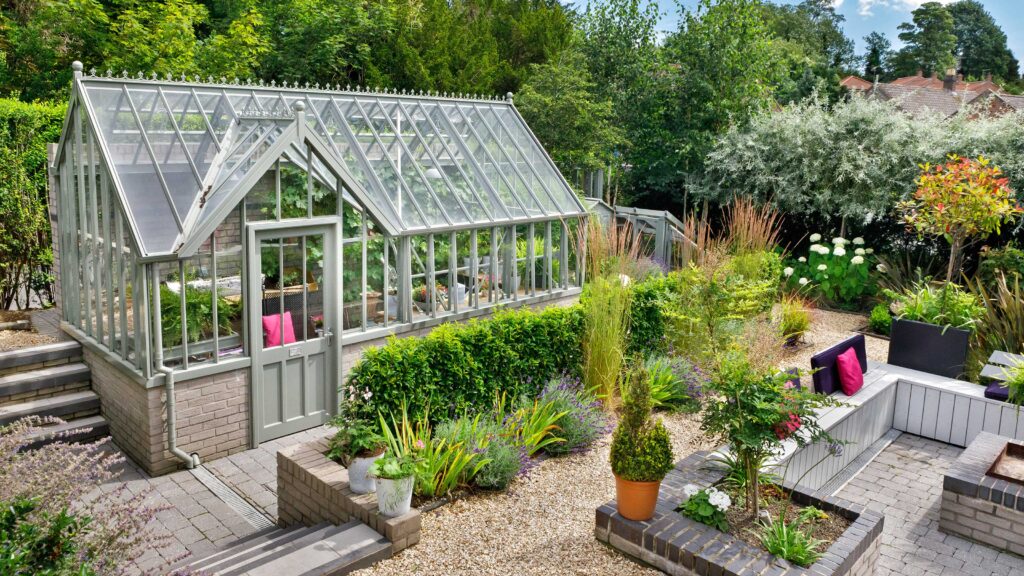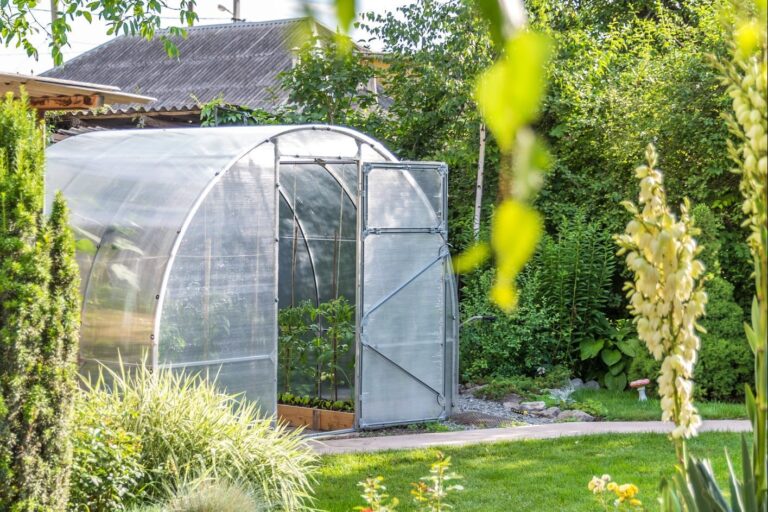There are different kinds of greenhouses. Some stick to buildings and save money. Others stand by themselves and let you choose where to put them. There are also low ones called cold frames that keep plants safe from the cold. Hoop houses are like tunnels and help plants grow for longer. Some greenhouses have curved roofs to let in more sunlight. A-frame ones are smaller and good for pretty plants.
Glass ones look nice but need more care and cost more. Some have many parts and help grow lots of plants, while others focus on using sunlight well. The type you pick depends on space, what you want to grow, weather, and money. Each kind has its good parts and things to watch out for.
How do different greenhouse structures vary?

These classifications provide insights into choosing the most suitable greenhouse structure and material based on specific needs, climates, and intended use cases.
Based on Structure
Traditional/Conventional Greenhouses
These are the most common and classic greenhouse structures with a rectangular or square shape and a peaked roof. Typically made of glass or plastic panels, they offer ample headroom and space for cultivating various plants. Efficient use of space, easy to construct, and provide uniform growing conditions.
Lean-to Greenhouses
Attached to a building or structure on one side, often utilizing an existing wall for support. Space-saving and cost-effective; benefit from the thermal mass of the building to regulate temperature.
Less material is needed for construction, easy access to utilities, and convenient access from the adjoining structure.
Dome-shaped Greenhouses
Geodesic or spherical structures that provide excellent strength and stability. Utilize less building material due to their inherent strength, provide good air circulation, and are visually appealing.
Efficient use of space, withstands heavy loads like snow, and offers a unique aesthetic.
A-frame Greenhouses
Triangular-shaped structures resembling the letter “A” in their design. Simple construction allows for efficient rain and snow runoff and provides good air circulation. Good for areas with high precipitation, visually appealing, and can be easily expanded.
Gable or Even-span Greenhouses
Rectangular-shaped structures with a pitched roof, similar to traditional greenhouses but with a uniform roof slope. Offer uniform height and maximum space utilization from wall to wall.
Suitable for large-scale commercial operations, efficient use of space, and easier installation of heating and cooling systems.
Based on Material Used
Glass Greenhouses
Historically common, made of glass panels or sheets that allow maximum light transmission.
Provide excellent light quality for plants, durable, and maintain consistent temperatures. Longevity, aesthetics, and superior light transmission for optimal plant growth.
Plastic (Polyethylene) Greenhouses
Constructed using polyethylene sheets or films stretched over a frame. Cost-effective, lightweight, and comes in various grades for UV protection and insulation. Easy installation, flexibility in design, and affordability.
Polycarbonate Greenhouses
Use polycarbonate panels known for their durability and strength. In addition, excellent insulation properties, is lightweight, and is resistant to impacts and harsh weather conditions.
Efficient heat retention, UV protection, and longer lifespan compared to some plastic materials.
Acrylic Greenhouses
Constructed using acrylic panels known for their transparency and durability. Excellent light transmission, stronger than glass, and lightweight.
Resistant to yellowing, offers good insulation, and allows better control of temperatures.
What are the functions of various greenhouse types?
These distinct types of greenhouses based on function help in choosing the appropriate structure and features depending on the scale of cultivation, desired plants, and specific goals, whether for personal use or commercial production.
Cold Frame Greenhouses
Cold frames are low, unheated structures with transparent covers (typically glass or polycarbonate) that are placed directly on the ground.
Primarily used to extend the growing season by creating a microclimate that protects plants from frost and cold temperatures.
Suitable Plants and Usage
Cold-hardy vegetables, herbs, and flowers that can withstand cooler temperatures. Starting seeds earlier in the spring, hardening off seedlings, overwintering plants, and providing a protected environment for early growth.
Season Extender Greenhouses
Similar to cold frames but larger in size, these greenhouses aim to extend the growing season by moderating temperature and protecting plants from adverse weather conditions.
Typically use passive solar techniques, incorporating thermal mass, insulation, and ventilation systems to regulate temperature.
Ideal Plants and Applications
More tender vegetables, flowers, and fruits that require additional protection from cold or unpredictable weather.
Starting plants early, growing heat-loving crops in cooler climates, and protecting plants from late frosts.
Hobby Greenhouses
Hobby greenhouses come in various sizes and designs, ranging from small backyard structures to medium-sized enclosures.
Cater to gardening enthusiasts or hobbyists for personal enjoyment, experimentation, and growing specific plants or varieties.
Different Designs and Functionalities
Designs can be freestanding or lean-to structures, made of various materials like glass, polycarbonate, or plastic.
Functionalities are often equipped with basic ventilation, heating, and shelving systems, customizable to suit individual gardening preferences.Commercial/Professional
Greenhouses
Large-scale Structures for Mass Production
These are expansive greenhouses designed for commercial agriculture, ensuring high yield and efficiency in crop production.
Aimed at mass-producing vegetables, flowers, and other crops for sale in markets or distribution to retailers.
Technological Advancements and Features
Advanced climate control systems, automated irrigation, specialized lighting, and monitoring technologies for optimized plant growth.
Integration of AI, sensors, and robotics for precise and efficient cultivation, reducing labor costs and enhancing productivity.
How do hydroponic and solar greenhouses work?

These specialized greenhouses demonstrate innovative approaches to agriculture that emphasize resource efficiency, sustainability, and technological advancements.
Hydroponic Greenhouses
Hydroponic greenhouses are designed for soilless cultivation, where plants grow in nutrient-rich water solutions instead of soil.
Increased crop yields, water conservation (up to 90% less water usage compared to traditional soil farming), faster growth rates, and precise control over nutrient delivery.
Plant Cultivation Methods and Systems
Various hydroponic techniques include deep water culture, nutrient film technique, aeroponics, and drip systems.
Utilize pumps, reservoirs, growth media (like perlite or rockwool), and specialized nutrient solutions to provide essential elements directly to plant roots.
Solar Greenhouses
Solar greenhouses harness solar energy for heating, lighting, and power within the structure.
Passive solar techniques, such as orientation, insulation, and thermal mass, capture and store heat from the sun. Some solar greenhouses integrate photovoltaic (PV) panels to generate electricity for lighting, ventilation, and other energy needs.
Sustainable Features and Benefits
Reduce reliance on fossil fuels by utilizing renewable solar energy, leading to lower operational costs and reduced carbon footprint.
Lower energy costs, extended growing seasons, minimized environmental impact, and increased self-sufficiency.
FAQ’s
What is the best type of greenhouse?
The best type of greenhouse depends on factors like climate, available space, intended use, and personal preferences. There’s no one-size-fits-all solution.
What are the classifications of greenhouses?
Greenhouses can be classified based on structure (e.g., traditional, lean-to, dome-shaped), materials used (e.g., glass, plastic, polycarbonate), and function (e.g., cold frame, hobby, commercial).
What is a 4-tier greenhouse?
A 4-tier greenhouse typically refers to a greenhouse with four levels or shelves for arranging plants vertically, maximizing space for cultivation.
What are two major greenhouses?
Two major types of greenhouses are commercial/professional greenhouses designed for mass production and hobby greenhouses intended for personal use and smaller-scale gardening.
What are the components of a greenhouse?
Greenhouse components include frames (metal, wood, or PVC), covering materials (glass, plastic, or polycarbonate), ventilation systems, heating systems, shelving, and sometimes automation equipment.
How many types of greenhouse gasses are there?
There are several greenhouse gasses, but the most commonly discussed are carbon dioxide (CO2), methane (CH4), nitrous oxide (N2O), and fluorinated gasses (such as hydrofluorocarbons).
Final Words
In conclusion, knowing about greenhouses is really important for people who love gardening or farming. We talked about different kinds of greenhouses, like the normal ones and the ones shaped like domes. We also learned they can be made from glass, plastic, or other materials. Some greenhouses, like the small cold frame or hobby ones, are made for specific purposes, like helping plants grow when it’s cold or just for personal gardening.
Big commercial greenhouses use fancy technology to grow lots of plants. Then there are special greenhouses, like hydroponic ones that don’t use soil and solar ones that use the sun’s power. Picking the right greenhouse depends on what you like, the weather, and what you want to grow. It’s a big decision for successful gardening!

